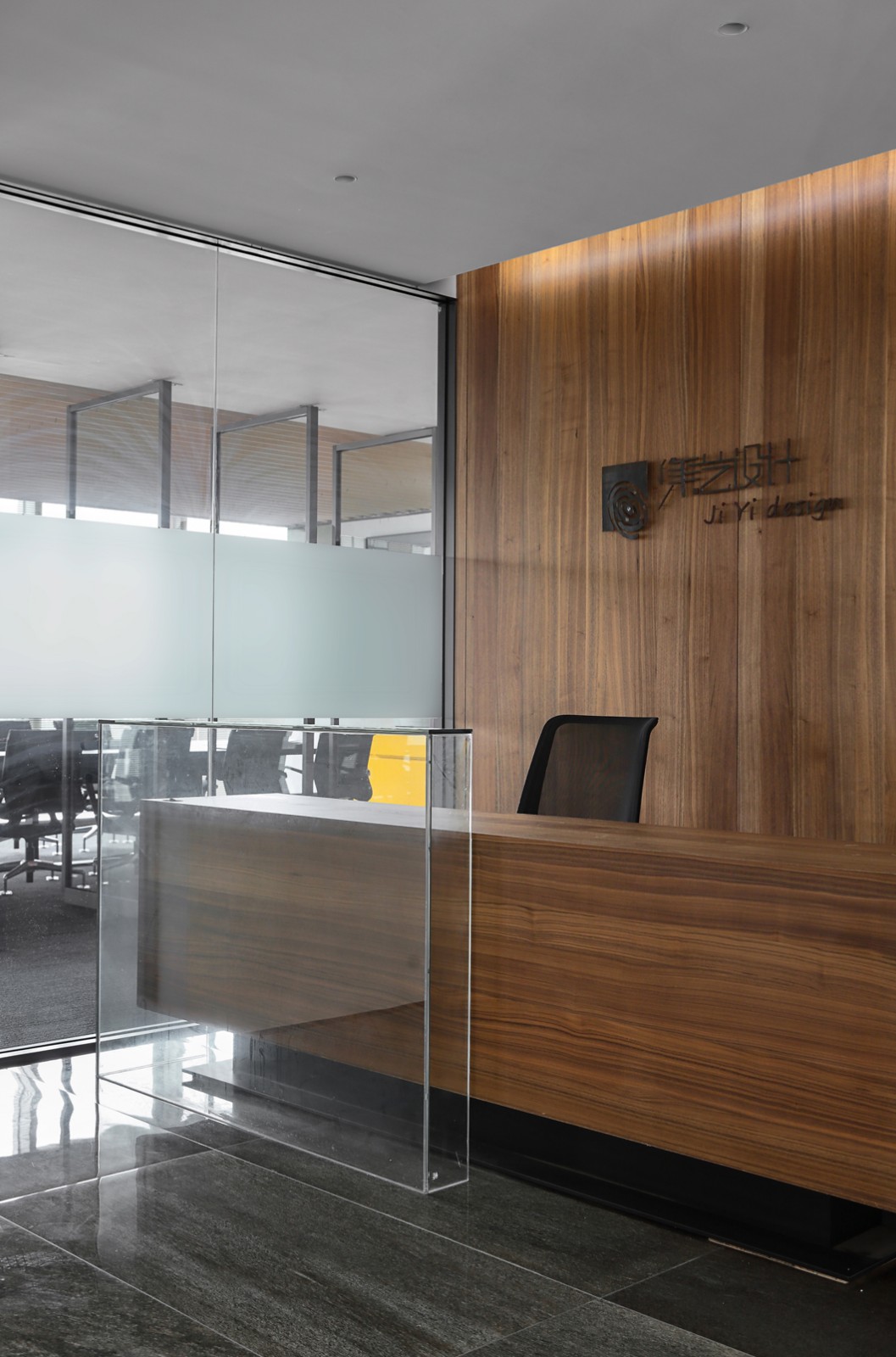Nestlé Headquarters Park Associati
2014-06-03 00:00
© Andrea Martiradonna
(Andrea Martiradonna)


架构师提供的文本描述。4月份,意大利雀巢公司在名为U27的大楼内启用了其新总部,从米拉诺菲奥里北部地区阿萨戈(MI)开工两年后完工。该建筑项目由Milanofiori 2000协会负责,项目执行和管理工作由工程公司General Planning负责。
Text description provided by the architects. In the month of April, Nestlè Italy inaugurated its new headquarters in the building called U27, completed two years from construction start in the Milanofiori Nord area, Assago (MI) . The architectural project was committed by society Milanofiori 2000 to Park Associati while executive project and management work have been taken in charge by the engineering firm General Planning.
© Andrea Martiradonna
(Andrea Martiradonna)


Park Associati的建筑设计是基于对进入Milanofiori北部地区的铰接式系统、行人通道和道路、与环境有关的气候因素以及将建筑物适当纳入总体规划的目标的分析方法。它与北部森林地区相连的位置导致了一个建筑群的发展,该建筑群虽然以封闭的庭院布局为基础,但能够在建筑物周围的路线上保持视觉渗透性。该建筑物的设计方式,创造了一个视觉连续性之间的自然景观的木材在北部和设计的景观本身。庭院是为建筑物的使用者保留的,与外部景观有关,被认为是一种“秘密花园”。
The architectural design by Park Associati is based on an analytical approach to the articulated system of access to the Milanofiori Nord area, the pedestrian walkways and roads, climatic factors relating to the context and the goal of properly integrating the building into the overall masterplan. Its position as a link to an area of forest towards the north led to the development of a complex that while being based on a closed courtyard layout, enables a visual permeability to be maintained in terms of the routes that surround the building. The building has been designed in such a way as to create a visual continuity between the natural landscape of the wood at the north and the designed landscape of the site itself. The courtyard, reserved for users of the building, relates to the external landscape and is conceived as a kind of “secret garden”.
© Andrea Martiradonna
(Andrea Martiradonna)


该入口面向半城市广场,是从站点西南方向(直接与地铁站相连)的主要行人通道的延续,而服务车则直接指向建筑群的另一端,通往一个被地面完全隐藏的区域。正门大厅与内部庭院有直接的视觉接触,并被一个大的、朝北的屋顶灯充满了自然光。食堂区是一个放松的地方,也是一个重要的社会互动区域,增加了环境的质量。
The entrance, that faces onto a semi-urban piazza, has been conceived as a continuation of the main pedestrian access from the south-west of the site (directly connected to the metro station) while service vehicles are directed to the opposite end of the complex to an area that is completely hidden by ground. The main entrance hall is in direct visual contact with the internal courtyard and is flooded with natural light by a large, north-facing rooflight. The canteen area is a place for relaxing and an important area for social interaction that adds to the quality of the environment.
© Andrea Martiradonna
(Andrea Martiradonna)


虽然建筑看起来紧凑和合理的计划,高地是在一系列的区块,允许一个更轻和更零碎的组成。这是通过将整个建筑分成几个部分来实现的,“吊箱”的大小和高度各不相同,每个都有一个稍微倾斜的立面。海拔通过表面的性质与环境建立了联系,从不同的角度看,它们有时是中性的,允许光线通过,有时是紧凑的和反射的,给自然环境以连续性。在某些时候,在彩色玻璃中添加垂直叶片使成分更加丰富,从而在不影响透明度水平的情况下进一步阐明体积。
While the building appears compact and rational in plan, the elevations are articulated in a series of blocks allowing for a lighter and more fragmented composition. This is achieved by dividing the whole building into a number of segments, ‘suspended boxes’ that vary in size and height and each with a slightly inclined facade. The elevations establish a link with the context through the nature of the surfaces, perceived from different angles, they are sometimes made neutral allowing light to filter through, other times compact and reflective giving continuity to the natural surroundings. At certain points the composition is enriched with the addition of vertical blades in coloured glass that further articulate the volumes without affecting the level of transparency.
© Andrea Martiradonna
(Andrea Martiradonna)
.jpg)

建筑物的凸起部分以一种自然的方式嵌入到地面上,形成一个与世隔绝的内部空间,上面有不同层次的体积,容纳着大楼的主要设施。建筑围护结构的清晰度和结构的节奏感与开放的室内空间有关,并充当一个网格,为内部循环生成不同的配置,使其具有高度的灵活性。
The raised part of the building is embedded into the ground in a natural way to create a secluded internal space on top of which sit volumes at different levels that house the building’s main facilities. The articulation of the building envelope and the rhythm of the structure relate to the open-planned interior spaces and act as a grid for generating different configurations for the internal circulation, enabling a high degree of flexibility.
© Andrea Martiradonna
(Andrea Martiradonna)


对能源问题和能源消费水平给予了相当大的重视。该建筑被认证为LEED(能源和环境设计的领导)“核心和壳牌”的黄金等级。
Considerable importance has been given to energy issues and levels of energy consumption. The building is certified LEED (Leadership in Energy and Environmental Design) “Core and Shell” in Gold class.








.jpg)





















.jpg)

.jpg)



.jpg)

.jpg)

.jpg)

.jpg)

.jpg)

Architects Park Associati
Location Via del Bosco Rinnovato, 20090 Milan, Italy
Category Institutional Buildings
Architect in Charge Filippo Pagliani, Michele Rossi
Design Team Park Associati Filippo Pagliani, Michele Rossi, Marco Siciliano, Marinella Ferrari, Stefano Lanotte, Lorenzo Merloni, Marco Panzeri, Davide Pojaga, Alessandro Rossi, Elisa Taddei, Paolo Uboldi, Fabio Calciati
Design Team General Planning Giovanni Bonini, Paolo Varenna, Loris Colombo, Luca Dagrada, Laura Barat, Matteo Molteni, Luca Rini, Paolo Rossanigo, Antonio Virelli, Alberto Villa, Claudio Bertolini, Mimmo Vitetta, Luigi Zinco, Walter Cola, Andrea Cristaldi, Vittorio Viganò, Claudio Bertagnolli, Manuel Schieder, Francesco Torchitti, Mario Pinoli, Giuseppe Zaffino
Area 34092.0 sqm
Project Year 2014
Photographs Andrea Martiradonna, Simone Simone
























